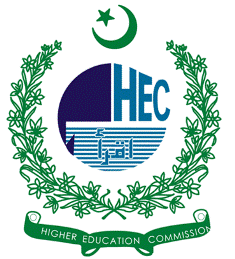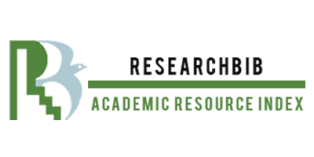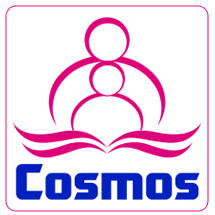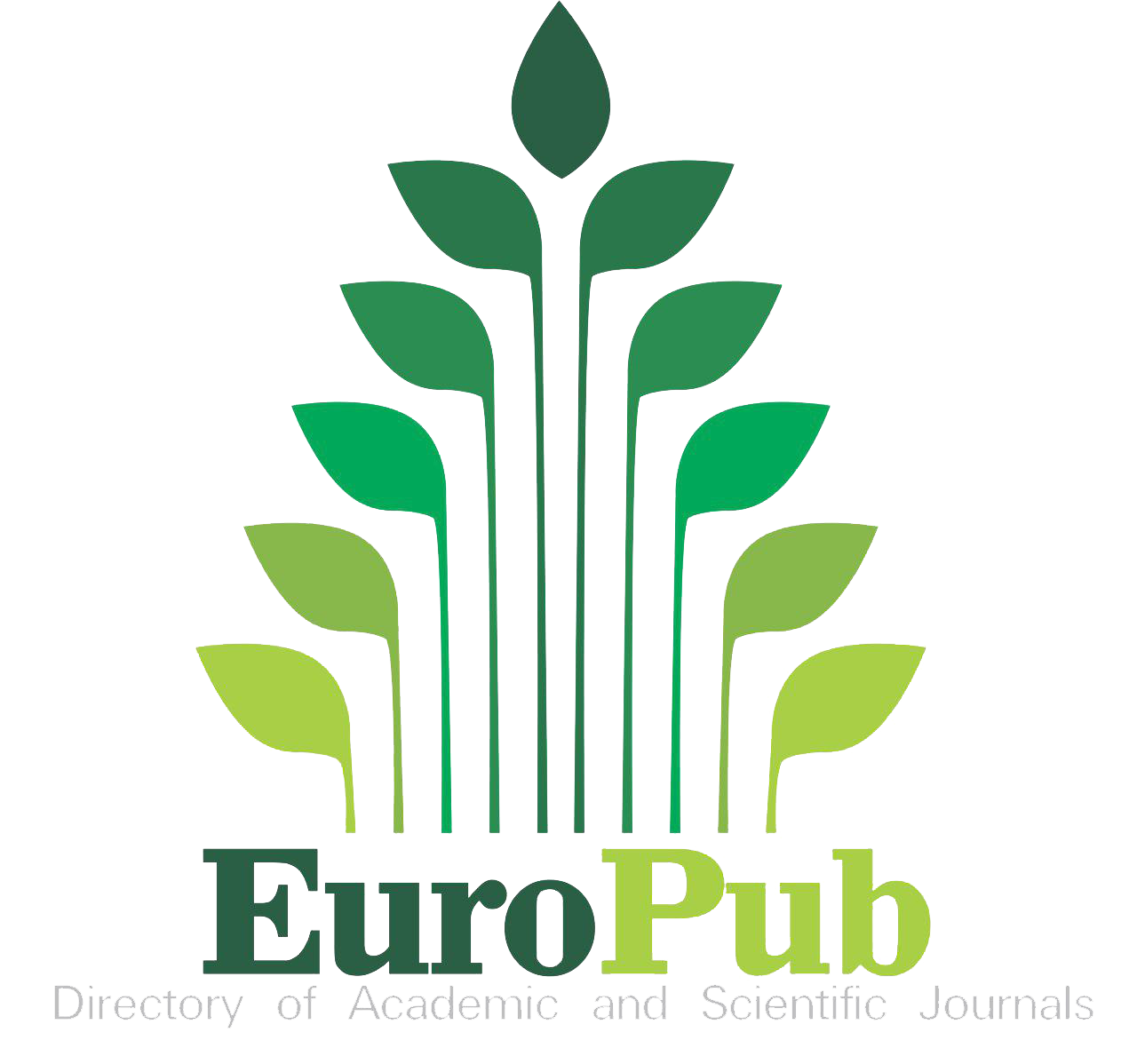Crossmark
If something is published in 50Sea Journals, it means that all of its authors agree with its content and have made sure that all of 50Sea Journal’s rules have been followed. If you don't follow these rules, your article might fail the pre-publication checks and not be able to be published.
If 50Sea Journals decides to publish your article, it will be posted on the 50Sea Journals website before it goes through peer review. We try to make sure that the content we make, publish, and give a platform to is responsible and hasn't been chosen or made in a biased way. We respect the intellectual property rights of the people who write for us and try to avoid unethical publishing practices like plagiarism, libel and stealing from other cultures.
Our publishing rules are laid out in our Publication Terms and Conditions. We expect all work to be fair and accurate, to tell the difference between facts and opinions, to be done clearly and honestly, and to be fixed right away if it is wrong or misleading. 50Sea Journals will decide on its own if an article is good enough to be published. 50Sea Journals has the right to decide at any time not to publish an article or to take it down after it has been published if there are any legal or ethical problems with it.
The people who make posters and slides need to make sure that their research and presentations follow the rules for posters and slides.
All articles sent to 50Sea Journals must be original. The work or large parts of it must not have been published before or be under review or consideration elsewhere. If there is any significant overlap with another paper, this must be cited in the article and mentioned on submission. 50Sea Journals uses Crossref's similarity checker (iThenticate) to look for plagiarism in articles. If clear plagiarism is found, including self-plagiarism, the article will be rejected. 50Sea Journals strongly discourages people from citing themselves too much or in the wrong way. Copyright-infringing content could get an article rejected if the problematic parts can't be taken out.
If an author wants to use a figure or table from a previous publication that has a copyright, they need to get permission from the owners of the copyright and give clear credit to the original source. Figures that were published before under a Creative Commons license can be used again as long as the conditions of the license for those figures are met.
The 50Sea Journals platform is set up to make it easy for researchers in all fields to quickly share their work and to help academics have productive conversations. 50Sea Journals doesn't have editors who decide if the results and data in an article are "valid." Instead, it's up to the authors and expert reviewers to decide if the results and data are "valid." But articles in 50Sea Journals must be scholarly work that can be reviewed by experts, so only people who are officially part of an accredited institution or recognized organization can publish. Because of this, the main objective requirement for publishing a research article is based on affiliation, as explained below. (Please note that some gateways have more specific requirements, such as requiring authors to be part of a certain organization; more information can be found in the "About this gateway" section of each gateway.)
Publication criteria for original research results and data: Authors must be officially affiliated with an accredited institution or recognized organization. Institutional/organizational email address AND institutional/organizational website profile are used to verify author affiliation (or other means).
- At least one author on the article (who should have made a major contribution to the article) must meet these key criteria for it to be suitable for publication in 50Sea Journals.
In the form of Reviews and Opinion articles, 50Sea Journals encourages open, scholarly discussion and review of research findings, trends, and topics that are directly relevant to researchers. For this type of submission to be accepted, it must add something useful to the scientific literature and be in a format that peers can review. Researchers who meet the above criteria can publish any article with new research and data. However, it is up to the Editorial Director of 50Sea Journals to decide whether a submitted review or opinion article is suitable for publication and open peer review by experts.
Everyone who wrote the article should have made a clear contribution. In the "Acknowledgements" section, you should list everyone who helped but doesn't meet the criteria for authorship (for example, if they only helped with technical details or writing). If a professional scientist or doctor helped write the paper, that must be stated. All of the people listed in the Acknowledgements section should give the author permission to use their names and affiliation.
If an author wants to change something in an article, the editorial office will ask for proof of who the person is. Most of the time, this will be done by sending an email to the email address only Please get in touch with the editorial team, who will be able to help you confirm your identity.
If an article's list of authors changes after it has been published, a new version of the article can be published with an explanation at the top in the "Amendments" section. All authors must agree on any changes to who wrote what. If the editorial team can't get in touch with an author, it's up to the corresponding author to ensure. According to COPE guidelines, the editorial team is not responsible for settling authorship disputes. Any disagreements between authors must be settled by the authors' institution (s).
50Sea Journals knows that authors, reviewers, or commenters may want to change their names for a variety of reasons, such as recognizing their gender identity, getting married, getting divorced, or other personal reasons. As with all communications with authors, the editorial office will need to confirm the identity of the person who wants to change their name. This is because we need to make sure that you are the one who wants the name change. 50Sea Journals wants to work with researchers so that they can give identification on their own terms. This is to avoid any stress that this process might cause. We do not need any official or legal proof that your name has changed.
Researchers should be aware that the corresponding author will be contacted to let them know that the person's name has changed. Researchers may want to let their co-authors know about the change so that they can use an updated copy offline or change how they cite the publication. Or, researchers can rely on the notice we send to the author and the updated online version. Please let us know if we should wait until a certain date to change the name so that researchers can talk with co-authors if they want to.
If an article is indexed, 50Sea Journals will do everything it can to make sure that indexer websites know about the change. Please note, though, that 50Sea Journals has no control over how third-party sites are used or how they look.
Please note that 50Sea Journals think it's unethical to ask to change someone else's name without their explicit permission. If an author, reviewer, or commenter needs to change their name, they should contact (Me@50sea.com) or the editorial office. To protect the researcher's identity and personal information, all correspondence will be kept secret. Only team members who need to know about the name change will be told, and the information will not be used for anything other than making the name change.
The authors must include a statement called "Competing interests." A conflict of interest during the review process won't stop a paper from being published, but it will give reviewers and readers all the information they need. If there are no conflicts of interest to report, the standard statement "No competing interests were disclosed" is added.
A competing interest can be about money or something else. Some examples of competing interests include (but are not limited to): people who receive funding, salary, or other forms of payment from an organization, or who own stocks or shares from a company that might benefit (or lose) financially from the publication of the findings; people or their funding organization or employer who hold (or are trying to get) related patents; official affiliations and memberships with interest groups related to the content of the publication; and people who have a personal or professional relationship with a person or organization that has a conflict
In the "Competing interests" section, you should explain how each author is connected to an organization like this. If the editorial office finds out about a conflict of interest after the article has been published, it will follow the COPE guidelines. 50Sea Journals follows the rules set by COPE for ethical oversight. When submitting an article, you must give details about this approval, such as the institution, name of the review board, and permit number (s).
Studies on people that are grouped by race/ethnicity, age, disease/disabilities, religion, sex/gender, sexual orientation, or other socially constructed groups should explain why they chose the definitions and groups they did. They should also say if any rules for grouping people were required by the funding agencies. When talking about different groups, it's important to use words that don't make people feel bad about themselves.
Ethics approval must be gotten before the research is done. It is usually not possible to get approval after the fact, and the study may not be able to be published."Patients have a right to privacy that should not be violated without their informed consent," Written descriptions, photos, and pedigrees should not include identifying information unless the information is needed for scientific research and the patient (or their parent or guardian) gives written informed consent for publication. In order for the patient to give informed consent, the manuscript that will be published must be shown to the patient. When informed consent has been obtained it should be indicated in the published article.”
For all studies with human participants, like personal genomics studies, case reports, clinical trials, questionnaires, observations, etc., written informed consent to take part in the research must have been obtained, and this should be written in the article in a section called "Consent." If only oral consent was obtained (rather than written), the reasons need to be explained, confirmation of approval that oral consent was adequate must be provided, and a statement of how it was documented included in the Consent section.
For any articles that include information that could possibly identify a person, please make sure that you have written, informed consent from all patients or healthy participants (or their legal guardians for minors or next of kin if the participant has died), confirming that the results and any accompanying images can be published. This includes large clinical datasets with direct or indirect identifiers (for more information, see this article), detailed information about people, images, and so on.
If your article contains any identifiable images of individuals, you must include a statement confirming that you have permission to publish these images. If your article has clinical images or identifiable data, you must include an explicit consent statement under a separate heading called "Consent" (we suggest: "We confirm that we have permission to use [images/data] from the participants/patients/individuals included in this presentation"). Or, if no permission was needed to publish (because, for example, the data has been anonymized), this should be made clear, and a note should be added to say that these changes have not changed the scientific meaning.
If the 50Sea Journals editorial office asks for them, signed consent forms should be given to them. Experiments with vertebrates or regulated invertebrates must follow the ethical rules set by the authors' institution as well as any national or international rules. If necessary, there should be a statement of ethics permission given or animal licenses. If animals were used but ethical approval wasn't needed, there should be a clear statement explaining why this approval wasn't needed.
In every case, there should be a statement saying that every effort was made to ease the pain of animals, and details about how this was done should be given. Plant studies must be done according to the rules set by the author's institution and any national or international laws. Depending on the situation, a list of permissions or licenses should be included. The Convention on Biological Diversity and the Convention on the Trade in Endangered Species of Wild Fauna and Flora should both be followed by authors.
The photographs that are printed in 50 Sea Journals should be true to the originals. So, we ask that no images, whether they are submitted as figures or uploaded as data, are changed so that readers don't get the wrong idea about what they show. We know that it is common to use software to change images so that they are clearer and easier to understand. But any changes that are made to images should be small and made to the whole image at the same time.
No changes are allowed that change the scientific meaning of the image, whether they are made to certain parts of the image or to the whole image. When pieces of the same gel are joined together, a dividing line should be drawn on the figures to show where the image has been joined. You shouldn't join parts of different gels together. When there are loading controls, they should always be part of the image. If two images are put together, any changes to the loading controls and the area of interest must be the same.
In the Methods section of an article, authors must include information about any changes they made to images that were published as figures or uploaded as data. This includes the name and version number of the software used to make these changes. An article in the Journal of Cell Biology (Rossner & Yamada, 2004) by the Rockefeller University Press gives good examples of wrong ways to change images. We also need the original, uncropped, unannotated, and unprocessed versions of all gel and micrograph images, which we consider underlying data, to be uploaded to an approved online repository.
The Editorial Team will use Adobe Photoshop and forensic image analysis software made by the US Office of Research Integrity to check randomly chosen figures and data. In line with COPE guidelines, if images that seem to have been wrongly changed are found, the authors will be asked for more information. If the suspected manipulations are not explained well enough, the article is likely to be rejected, and the author's institution may be contacted.
50Sea Journals uses the WHO definition of a clinical trial to decide what a clinical trial is: "A clinical trial is any research study that randomly assigns human participants or groups of humans to one or more health-related interventions to test the effects on health outcomes." Interventions include, but are not limited to, drugs, cells, and other biological products, surgical procedures, radiologic procedures, devices, behavioral treatments, process-of-care changes, preventive care, etc. Trials should be registered before they start, and the article should include both the trial registration number and the date it was registered. The ICMJE has a list of frequently asked questions about trial registration, and the WHO has a list of approved registries.
Even though we expect trials to be registered before they start recruiting patients, some groups (like the AllTrials campaign) have realized that registering trials after the fact will encourage the publication of both good and bad results, as well as trials that were done before registration was possible. In line with these plans, 50Sea Journals will consider trials that were registered after the fact, as long as the article explains why the trial was registered late. Again, the trial registration number and date must be written in the article's Methods section.
Articles that report systematic reviews must adhere to the PRISMA guidelines, and authors should also include a completed PRISMA checklist and flow diagram as supporting files. The PRISMA-P guidelines must be followed by the study plans for systematic reviews. We ask authors to include a PRISMA-P checklist that is filled out.
When a completed reporting checklist is needed, a copy should be uploaded to an online repository as extended data. Under the heading "Reporting Guidelines," the Data Availability statement should include information about the repository, the DOI, and the license. Since your article won't have page numbers in the online version, please use section names instead of page numbers when filling out the checklist.
All 50Sea Journals articles that report original results should include the source data and information about any software used to process the results. People must be able to see the source data in order to be able to repeat the study, analyze the data, and, in some cases, use the data again. If you don't provide the source data for a publication without a good reason, the article is likely to be rejected. See our data guidelines for more information on what kind of data authors need to include in an article for 50Sea Journals, where the data can be stored, and how they should be presented.
We know that there may be times when it's not possible to share data openly (because of ethical or security considerations, or data protection issues). If you think this is true for your article, please let the editorial team know when you send it in. We have rules in place that allow papers with this kind of data to be published while keeping the right level of security.
If access to data is limited for ethical or security reasons, the manuscript must include a) a description of the restrictions on the data; b) all the information needed for a reader or reviewer to apply for access to the data, and the conditions under which access will be granted; and c) all the information needed for a reader or reviewer to access the data.
Human data that can't be effectively de-identified shouldn't be shared in order to protect the privacy of patients or participants unless they have given written permission for their identifiable data to be made public.
In cases where the data can't be shared, the manuscript must include:
1) an explanation of the data protection concern;
2) any intermediary data that can be de-identified without compromising anonymity
3) what, if anything, the relevant board or equivalent said about data sharing; and
4) where necessary, all the information needed for a reader or reviewer to apply for access to the data and the conditions under which access can be granted.
We ask that authors don't share data that they got from social media sites because it's both unethical and against the law. This includes copies of the data in the manuscript, like pictures of representative social media posts, unless you have the author of the social media post's written permission to publish it. The manuscript should include a Method section containing a detailed description of the methodology to allow replication by others, including sources, search dates, full search strategies/terms, eligibility criteria, and data selection processes; and a description of the data in the Data Availability section, including any variables assessed; and the following disclaimer in the Data Availability section: The data that this study is based on cannot be shared because of ethical and copyright issues with social media data. The Methods section has all the information you need to be able to repeat the study. If you have questions about the method, you should ask the author whose name is next to theirs.
You can share the Tweet IDs or User IDs in a dataset if you are using Twitter data. This lets other people use Twitter's API to "hydrate" (get full information about) these IDs. Datasets with Tweet/User IDs should be uploaded under a CC license, which is what our data guidelines say to do.
Large sets of data are not always easy to share. In these cases, when authors send in their manuscripts, they should include a description of the data, including the file types and sizes. The editorial team can then give advice about who should host.
When data is too big to be hosted by a recommended repository, the manuscript should include • any intermediate data that can be easily shared; • all the information a reader or reviewer needs to access the data, along with a description of how to do so; • any intermediate data that can be easily shared; and • any intermediate data that can be easily shared.
If the data came from a third party and access to it is limited, the manuscript must include • all the information needed for a reader or reviewer to get to the data the same way the authors did; • any intermediary data that can be shared legally; and • publicly available data that is representative of the analyzed dataset and can be used to apply the method described in the manuscript.
When data from human studies comes from a government organization, like the Ministry of Health, and there are strict rules about who can access the data, the authors must include a clear explanation of the rules and all the information needed for a reader or reviewer to request access from the data owners. This option will be talked about with authors on a case-by-case basis, and it will only be considered if there are no clear competing interests, especially if they are financial.
A Software Availability Statement should have information about the software. You can add this to the end of your article, before the list of references. When writing the statement, please include • Software available from the URL for the website where software can be downloaded, if applicable.
- The URL for the versioning control system has the source code (for example GitHub).
- Archived source code at the time of publication: DOI and citation (please select the appropriate DOI for the version which underlies your article).
- License: The license must be open and, if possible, approved by the OSI.
Please talk to the editorial team if there are moral or privacy reasons why the source code shouldn't be made public. Where proprietary software from a third party was used, an open-source alternative must be given in the article so that the analysis or research can be done again by anyone. We understand that this may not always be possible, and exceptions may be made if the chosen proprietary software is the only way to do certain things and there is no open-source software that can do the same thing.
If your article is affected by this exception, please provide:
- A statement in the "Software Availability" section that clearly describes the third-party proprietary software used in the research, including its name and version number, as well as what it was used for.
- A detailed "Methods" section that includes things like the math behind any simulations or calculations done with proprietary software.
- This should be given out in the open and in a file format that anyone can use. If there is no way to make an open file format, this can be given in a proprietary format. Learn more about how to upload datasets by reading our data guidelines.
Most articles in 50Sea Journals are published under a CC BY license, which allows unrestricted use, distribution, and reproduction in any medium as long as the original work is properly cited. The copyright of the article stays with the current copyright holder, which is usually the author or the author's institution. Some government workers, when it makes sense, get extra exemptions.
When possible, data related to 50Sea Journals articles are made available through a Creative Commons Public Domain Dedication (CC By license). This makes it easier and more likely that the data will be used again, and it helps avoid problems with attribution stacking when combining multiple datasets that were made by different people and have different licenses.
Under the CC BY license, you can also find peer-review reports that go along with an article. Every article that is published in 50Sea Journals gets a DOI and is published permanently. This is true no matter how the peer review that comes after publication turns out. All content is permanently archived even articles that haven't (yet) passed peer review. All versions of peer-reviewed articles will be saved.
Authors can revise, change, and update their articles by publishing new versions, which are added to the article's history. However, once a version is published, it can't be changed or taken down, and it will always be on the 50Sea Journals website. 50Sea Journals is part of the CrossMark scheme, which is a group of publishers working together to make it easy for readers to find the most recent version of an article. By following the CrossMark policies, 50Sea Journals promises to keep the content it publishes up-to-date and let readers know about any changes that happen.
If you click on the CrossMark logo at the top of each 50Sea Journals article, it will tell you the current status of the article and take you to the most recent version that has been published. It may also give you more information, like new peer review reports.
In order to keep the scholarly record accurate and complete, the following policies will be used to correct content that has already been published. These policies are based on best practices in the scholarly publishing and library communities.
In traditional journals, where articles are peer-reviewed before being published, Corrections are printed to let readers know about mistakes that became clear after the article was published.
In 50Sea Journals, on the other hand, articles go through peer review after they are published, and publication is not "final" because new versions can be added at any time. During the peer review process, mistakes that are found may be pointed out in the published peer review reports, which are part of the article. Authors can put out updated versions, and any mistakes that are found during peer review or later can be fixed by putting out new versions. At the beginning of every new version, there is a section called "Amendments" that lists all of the changes and corrections made since the last version.
Articles can be taken down for many reasons, such as:
1) Honest mistakes made by the authors (like mixing up samples or using a tool or piece of equipment that turns out to be broken)
2) Research misconduct (making up data)
3) Duplicate or overlapping publications
4) Fraudulent use of data
5) Clear plagiarism
6) Unethical research
The Retraction notice for any article that has been taken down will explain why it was taken down and who is behind it. The retraction notice will be linked to the retracted article, which usually stays on the site, and the article will be clearly marked as retracted (including the PDF).
Most of the time, an article is only taken down at the request of the authors or because of an investigation by the publisher. In the way, 50Sea Journals publishes, it is important to remember that a retracted article is not "unpublished" or "withdrawn" so that it can be published somewhere else. This is the same as in traditional journals. Most of the time, the reasons for retracting a study are so bad that the whole study or a big part of it shouldn't be in any scientific literature.
The content of a retracted article would only be taken down if the publisher, copyright holder, or author(s) were forced to do so by the law. For example, if the article is clearly defamatory or violates the legal rights of others, or if the article is the subject of a court order, the content would be taken down. In this case, the article's bibliographic information will still be on the site, along with information about what happened that caused the content to be taken down.
In rare cases, such as when false or inaccurate data have been published that, if followed, pose a serious health risk, the original wrong version(s) may be taken down and a corrected version may be put online. In the most recent version, the reason for this partial removal would be made clear.
An Editorial Note could be used to let readers know about a possible problem with an article that has not yet been fixed. Such an Editorial Note could be added, for example, if 50Sea Journals finds out that there may have been misconduct in research or publication, or if there is a serious disagreement between authors or between authors and third parties. Most of the time, the Editorial Note will be posted while more research is done and until a more permanent solution is found, such as publishing a revised "corrected" version or a Retraction.
In rare cases, 50Sea Journals may decide to publish an Expression of Concern, which is linked to the problematic article, if there are serious concerns about an article but no conclusive evidence that would clearly justify a Retraction. This can happen if:
- there isn't enough proof of wrongdoing in research or publication;
- there are problems with the article, but the authors' institution won't look into it;
- an investigation into alleged wrongdoing hasn't been fair or clear; and
50Sea Journals has registered to set membership of the Committee on Publication Ethics (COPE), and it follows COPE's codes of conduct for editors and publishers when it comes to publishing.
If a case of possible wrongdoing in research or publication is brought to our attention, we will follow COPE's rules and procedures. First, this usually means getting in touch with the person or people about whom allegations have been made to ask for an explanation. We might also have to talk to the person's research institution, an ethics committee, or some other third party.
Misconduct in research includes making up or lying about data or not following the right ethical rules when doing research with animals or people. Publication misconduct includes things like publishing the same article more than once or doing clear plagiarism. Misconduct does not include honest mistakes or different points of view.
If you think that an article on 50Sea Journals might have been written in a dishonest way, please contact the editorial office (Me@50sea.com). Within 10 working days, a member of the editorial team will get in touch with you to confirm the information you've given and ask any additional questions we need to do our investigation. Please keep in mind that we may not be able to keep you up to date on the whole process, but we will try to let you know what happens when we can.
When it comes to complaints and appeals, 50Sea Journals follows the COPE rules. If you disagree with a decision made by the editors or want to make a complaint, you should email Me@50sea.com. If the editorial office can't help you solve your problem, you should talk to the Publishing Director.
We like it when scientists talk about research results without being asked to. Our Comment system is used to publish these kinds of posts. We usually only let comments from people who have a formal affiliation with a research institution or other relevant organization. This is to make sure that comments add to the scholarly debate and stay on topic. We might also let readers comment who have shown they know a lot about a particular area of research. As part of our commitment to being completely open, the reader's full name and affiliation are listed in their public comment.
The comments should be about the scholarly content of the article they are linked to. Comments that look like ads could be libelous, or have other legal problems are not allowed. This includes comments that reveal patient information. We won't accept Comments that are rude, obscene or have bad things to say about people, their race, ethnicity, sexual orientation, or religion.
All Comments must be written in good English. If a Comment is hard to understand, it may be deleted. If a reader wants to comment on an article, they have to say if they have a conflicting interest. Competing interests can be financial (like owning a patent or getting money from a company that could lose or gain money if the Comment is published), or they can be personal, religious, political, or other things that don't have to do with money. Please think about the issues listed in the Declaration of Competing Interests when you fill out our declaration.
Even though we encourage open scientific debate and discussion, we will not allow anyone to be mean to our authors or reviewers through our Comment system or on social media. In extreme cases, we might call the affiliated institution to tell them about people who are being abusive.
All articles go through formal peer review by invited experts who meet our criteria for reviewers. These criteria are meant to make sure that reviewers have enough knowledge and qualifications to judge the content of the article and that they don't have any conflicts of interest.
The peer-review process is completely open to the public. The names of the reviewers and their reports are published with the article, and the authors' responses to the reviewers (or to reader comments) are also posted for everyone to see. Revisions and updates are released as new versions with clear explanations of the changes the authors made.
Most articles get two or three peer-review reports. The reviewers choose an approval status, which helps to figure out if the article has "passed peer review" and is listed in bibliographic databases. Some articles that haven't had enough peer review reports for a long time may no longer be subject to peer review. As a general rule, authors can stop peer review if their article hasn't been reviewed in 6 months or if it's only been reviewed once in 9 months. When authors haven't actively asked for peer review, the 50Sea Journals team may add a note to the article to let readers know that peer review is not happening.
Articles with 0 or 1 report have not passed peer review and are not in PubMed, Scopus, or other bibliographic databases. If peer review is stopped in consultation with the 50Sea Journals team, the article (which is permanently published with a DOI and can't be taken down) can be thought of as a preprint, and the authors can choose to send the manuscript to a journal for peer review and publication elsewhere (it is at the discretion of the journal editors the authors are submitting to how they consider the history of the article at 50Sea Journals). If the authors want, peer review can be turned back on for these articles at a later date, as long as they haven't been peer-reviewed and published elsewhere in the meantime.




















